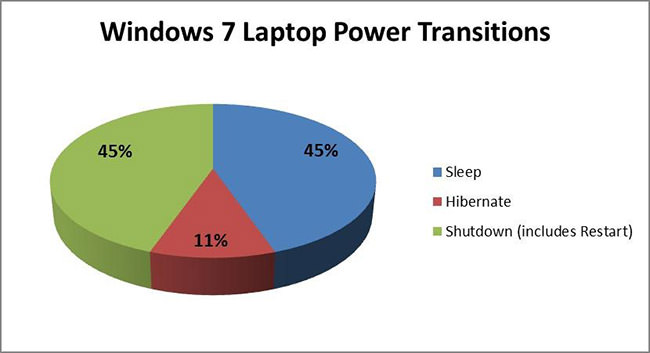
- WINDOWS 10 SLEEP VS HIBERNATE HOW TO
- WINDOWS 10 SLEEP VS HIBERNATE WINDOWS 10
- WINDOWS 10 SLEEP VS HIBERNATE WINDOWS
Once it is done the computer will go to sleep mode. With hybrid sleep, the contents of the RAM, or the things you were working with, will be available on RAM and and a copy of it will also be stored in the hard drive or the default boot device as well. The feature of hybrid sleep is a combination of both hibernate and sleep mode. But there are no such requirements for space reservation on the hard drive in case of the sleep mode.

On enabling hibernation, a few gigabytes will be reserved on your hard drive corresponding to the size of your RAM. Though it depends upon different parameters of your laptop battery.īut on hibernate, your computer is completely turned off, and thus, no power is consumed as long as your laptop is in hibernation. I put my computer to sleep while going out to work, and come back wake it up after 12 hours to see only 3% battery is invested. If your laptop is on battery, it will consume very little battery, as long as it is in sleep mode. In sleep mode, the computer doesn’t turn off, and thus, you don’t need to pass through the bulky bootup process. With higher RAM, the time to hibernate and wake up will increase, as more data needs to be swapped. But with the hibernate option, the data is swapped between RAM and hard drive, and thus it takes longer time. In sleep mode, the data remains within the RAM, as it is and there isn’t any swapping of data between the RAM and hard drive, and thus, putting your computer to sleep, and waking up is pretty fast. What is the difference between Sleep mode and Hibernate? You can know more about these two terms from here in detail. Thus, hibernate is a kind of warm booting, and sleep is somewhat similar to cold booting. On powering on again, the computer will test itself or do the POST, and then it will copy down the contents of the hard drive to the RAM. In hibernate, the operating system requests the hardware to turn off completely. When you turn your computer on again, the data from your hard drive will be brought back to the RAM, and your computer will be in the same state when it was hibernated. In hibernate, all the data on your RAM will be stored in your primary storage or hard drive, and your computer will turn off completely after that. Hibernate works in a little different way.
WINDOWS 10 SLEEP VS HIBERNATE WINDOWS
What do you mean by Hibernate in Windows and other OS On hitting the power button, the computer turns on instantly (or within a few seconds), and you will be served with the same cup of tea, which you left before putting your computer to sleep. That is what sleep mode is, in a nutshell. The computer then enters into a very low power state, and all your work will and RAM data be preserved. With Windows sleep mode, the apps which are still open, or your current tasks will be stored in your RAM, as it was. Why shutting down your computer is not that bad? What is Sleep mode? So without further delay, let’s know the technical actualities related to Windows sleep and hibernate modes.
WINDOWS 10 SLEEP VS HIBERNATE WINDOWS 10
The sleep Windows 10 shortcut can be accessed from the power menu, and the same goes for the other options.

But what exactly is the difference! Which one should you go for, if you want your computer or laptop to take rest for a while!īefore proceeding with, which one you should do, it is worth knowing what is sleep mode and hibernation? If you are a geek, you can make out, which one to do when, after knowing how sleep mode and hibernation differ from each other. There isn’t any doubt, the two options are provided for two different purposes.
WINDOWS 10 SLEEP VS HIBERNATE HOW TO
I am sure, the options are self-explanatory, but what about the sleep and hibernate! If the hibernate option is greyed out, you can learn how to enable hibernation Windows 10 and other Windows versions, here.

Two of them are shut down or power off, and the restart. Expanding the ‘Power’ menu in Windows 10 or any other previous versions of Windows, open up a few options.


 0 kommentar(er)
0 kommentar(er)
